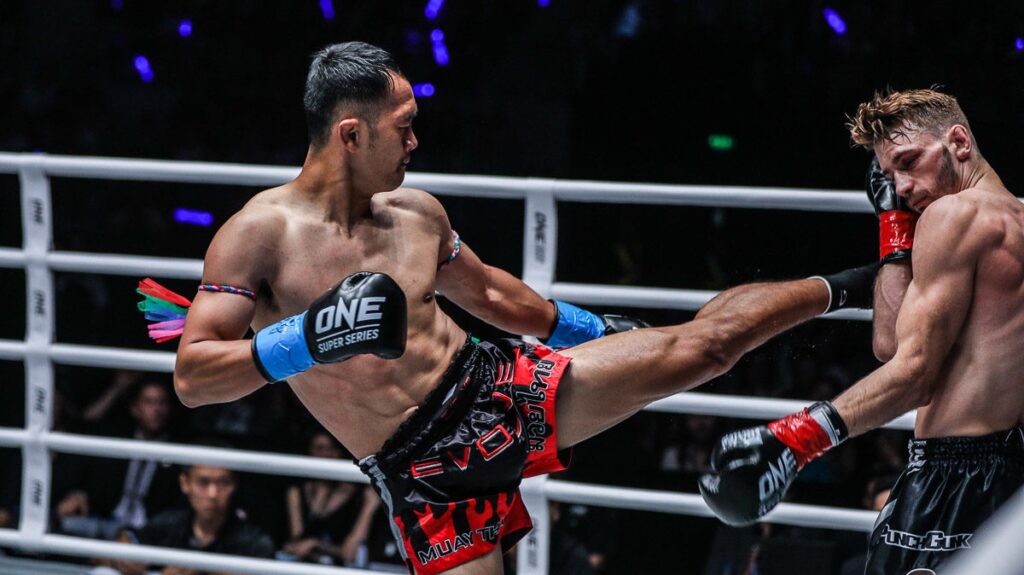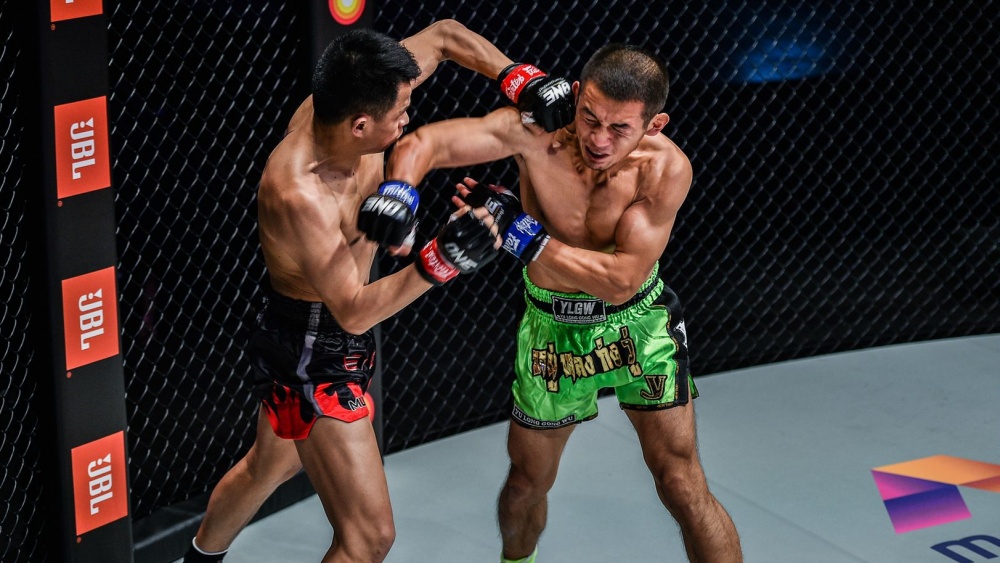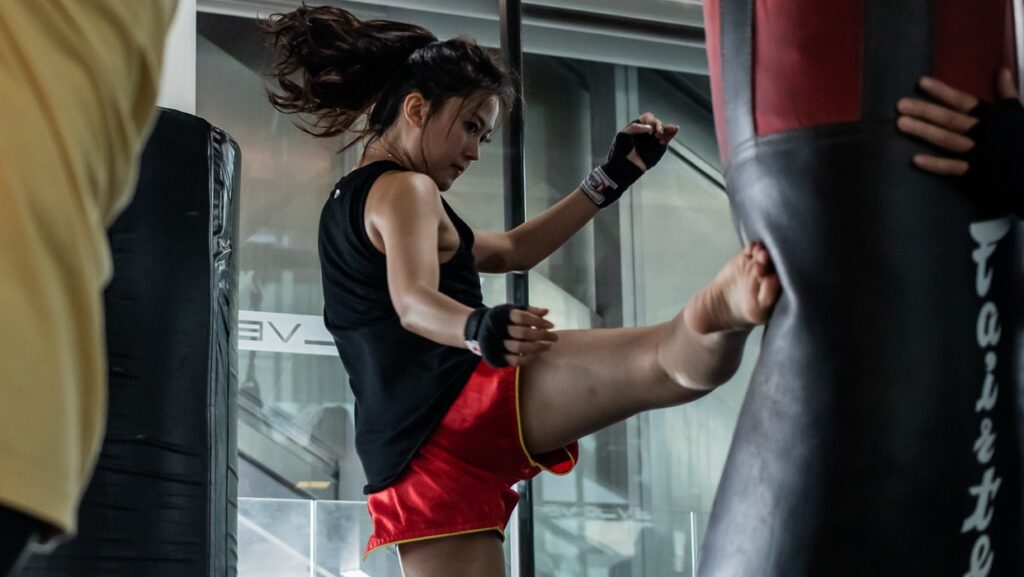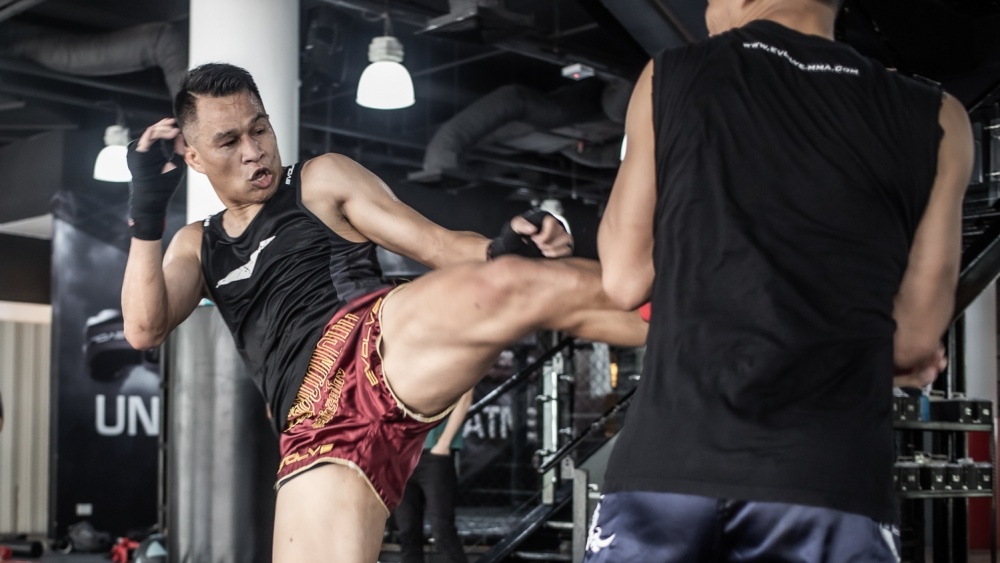In the world of Muay Thai, where fighters aim to achieve maximum efficiency and strategic advantage, being a southpaw can provide a unique edge. Standing with their right foot forward and left foot back, opposite to the orthodox stance, southpaw fighters possess distinct angles of attack and defence.
Below we will explore the advantages of being a southpaw, discuss key considerations for southpaw combinations, and present five effective Muay Thai combinations tailored for southpaw fighters.
What Makes A Southpaw Unique
In Muay Thai, the difference between a southpaw combination and an orthodox combination lies in the stance and positioning of the fighters. Here are the primary distinctions:
- Stance: Southpaw fighters stand with their right foot forward and left foot back, while orthodox fighters have their left foot forward and right foot back. This difference in stance fundamentally alters the positioning and angles of attack for each fighter.
- Lead Hand: In an orthodox combination, the lead hand is the left hand, while in a southpaw combination, the lead hand is the right hand. This means that the lead right hand is used more frequently in southpaw combinations, while orthodox combinations typically rely more on the lead left hand.
- Angles Of Attack: Due to the opposite stances, the angles of attack and defence differ between southpaw and orthodox fighters. For example, a southpaw fighter’s rear hand (left hand) will have a clearer path to the opponent’s centreline, whereas an orthodox fighter’s lead hand (right hand) will have a more direct line of attack.
- Setups And Footwork: Southpaw fighters often have specific setups and footwork patterns designed to capitalise on their stance. They may focus on circling to their right to gain an advantageous angle, while orthodox fighters might emphasise circling to their left.
- Counterattacks: Counter-attacking strategies can also differ between southpaw and orthodox fighters. A southpaw fighter may tend to counter with their lead hand, while an orthodox fighter may rely more on counters with their rear hand.
It’s important to note that these differences are not absolute, and individual fighters may have their own preferences and variations. Ultimately, the effectiveness of combinations depends on the skill, technique, and adaptability of the fighter, regardless of their stance.
Advantages Of Being A Southpaw Fighter
- Unfamiliarity: Most fighters are orthodox, making the southpaw stance less common. This unfamiliarity can work to your advantage, catching opponents off-guard and disrupting their timing and angles.
- Powerful Lead Hand: As a southpaw, your lead hand is your right hand, often your power hand. This allows you to throw potent jabs and hooks with your lead hand, unsettling opponents with unexpected power.
- Enhanced Footwork: Due to the relative scarcity of southpaw opponents, your footwork may be more refined than that of orthodox fighters. This agility and adaptability provide you with an edge in movement and positioning during exchanges.
- Expanded Angles: With your lead hand on the opposite side of your body compared to orthodox fighters, you have access to a wider array of angles for punches and kicks, opening up unique opportunities to exploit your opponent’s defences.
- Unpredictability: The reversal of stance and punches can make southpaw fighters more unpredictable to orthodox opponents, adding an element of surprise to your attacks and making it challenging for opponents to effectively defend against your strikes.
Mastering Southpaw Combinations
To maximise your effectiveness as a southpaw fighter, it is essential to develop and execute combinations suited to your stance and fighting style. Here are some key considerations:
- Positioning: Aim to position yourself to the outside of your opponent’s lead leg, aligning your rear shoulder and rear foot with their centreline. This alignment shortens the path of your strikes, increasing speed and power.
- Angles And Footwork: Capitalise on your ability to create angles by pivoting or circling to your right. This can place you in a dominant position, similar to getting behind your opponent.
5 Effective Muay Thai Southpaw Combinations
- Jab, Cross, Hook, Low Kick: Target your opponent’s head with a jab and cross before delivering a hook to the body. Finally, follow up with a powerful low kick to the legs.
- Jab, Cross, Hook, Uppercut: Employ this combination to penetrate your opponent’s guard, launching strikes to their head and body with a focus on generating power through the uppercut.
- Jab, Cross, Left Hook, Left Body Kick: Begin with a standard jab and cross, then transition smoothly into a left hook to the head. Conclude the combination with a forceful body kick.
- Jab, Cross, Lead Teep: This combination excels at maintaining distance and dictating the fight’s pace. Use the jab and cross to set up a lead teep (push kick) to control your opponent’s forward movement.
- Jab, Cross, Lead Hook, Rear Kick: Start with a jab and cross, then follow up with a lead hook to the head or body. Finish the combination by delivering a powerful rear kick.
Master These Unique Southpaw Combinations!
As a southpaw Muay Thai fighter, you possess a unique advantage that can disrupt your opponent’s fight strategy and grant you a competitive edge. By capitalising on unfamiliarity, leveraging your powerful lead hand, refining your footwork, exploring varied angles, and cultivating unpredictability, you can excel in the ring.
Practice and master the recommended combinations, incorporating them into your training regimen, and remember that working with a qualified trainer is vital for refining your technique and timing. Embrace your southpaw stance and unleash your full potential in the art of Muay Thai.
You may also like:
The Beginner’s Guide On Boxing As A Southpaw
WATCH: 10 Of The Best Southpaw Fighters Of All Time (Videos)

















